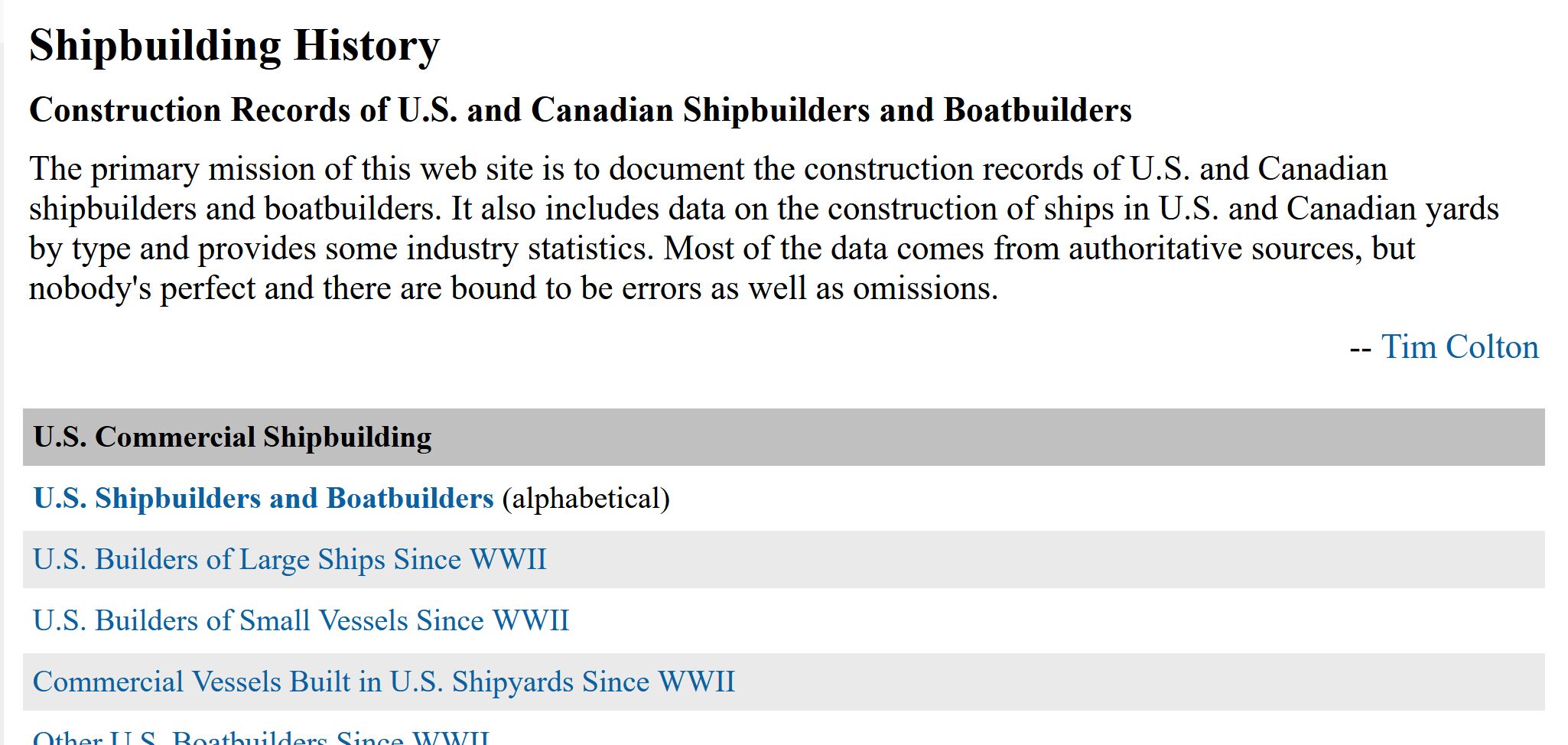July 15, 2022
ShipBuildingHistory.com
July 15, 2022
ShipBuildingHistory.com is a resource that I have often used to look up many of the reefs and a few of the wrecks in this website. I recently sent in an update, and received a notice that the author had passed away. The next thing that usually happens in these cases is that the website disappears when the hosting goes unpaid, so I immediately grabbed a copy for myself.
That's when I found that the original site was almost a terabyte in size, and 95% of that was formatting. So I cleaned it up, and cleaned it up, and cleaned it up, and added some navigation structures and other niceties that you would expect. Then I posted my copy as a sub-site here:

This is all the work of one person - Tim Colton. As near as I can tell, the whole thing was done by hand in Microsoft Word, and a little FrontPage, which is just incredible. I've added some site statistics to the bottom of the home page, and they are mind-boggling. It would be a terrible shame for a resource like this to 'wink-out'. That hasn't happened yet, but who knows?
My version is very clean html with a little css. I thought about folding it into the main WordPress site, but these huge data tables would be a bad fit in the main site's layout. Also, that would blow up the database (almost 1200 new pages!) so I will let it stand alone.
After more than a week, Google has finally started indexing the new pages, so the whole thing will be searchable in a while. Maybe a long while - Google can be pretty lackadaisical, especially with old-style static html pages.
Update 7/16/22:
So far, Google has indexed about 50 pages, out of about 1200. This is going to take a while. I even made it easy for them with a sitemap! I'm not worried about Bing, they'll just crawl Google.
I just looked at it on my 8" tablet. Ha ha -you need a magnifying glass! That's just how it is, you need a large high-resolution display for those data tables.
Update 7/20/22:
Google continues to be amazingly slow. If I log in to their "tools", there is no very useful information. Everything they do is is deliberately opaque and obfuscated. If I put the shipbuilding pages into WordPress, I would have a much better search immediately. At this rate, Google is going to take a year. This is why I depend on Google as little as possible.
If there is something you really want to find, the old version is still up for the moment and fully indexed.
Update 7/30/22:
Google finally got off their digital asses and has indexed about three-quarters of the site, although the coverage has not propagated through their server network and is still spotty. The same search can give completely different results depending on which server you hit. If I log in to the Google control panel, it still shows only 127 pages indexed, although the actual number is much higher. Apparently, one hand does not know what the other is doing.
At least this isn't going to take forever as I had feared. A few more weeks and Google's coverage should be pretty complete. I do see them hitting the sitemap fairly often without being prompted. This static html site is an interesting contrast to a WordPress-backed site. Google loves WordPress, it's spiders bother it no end and index new pages almost immediately. I've actually seen them index new pages as I was writing them!
I must say that once it starts working, their custom site search is pretty good. I even hacked it to seamlessly match the style of the rest of the site.
Update 12/5/22:
The original site is gone, as I predicted. Good thing I made a copy.
